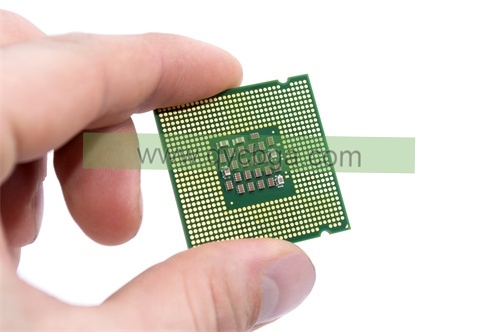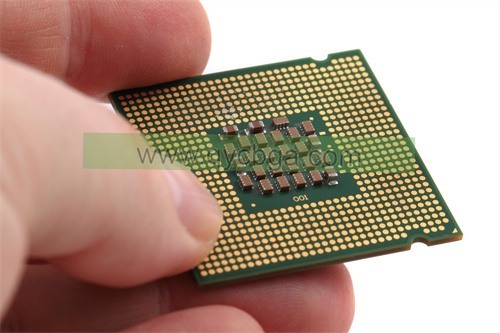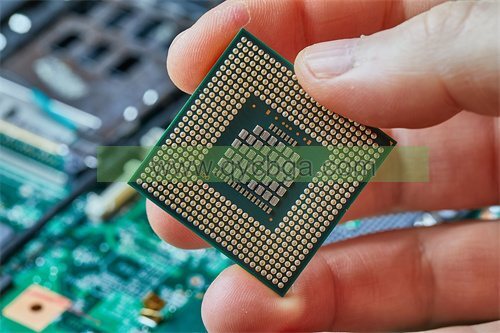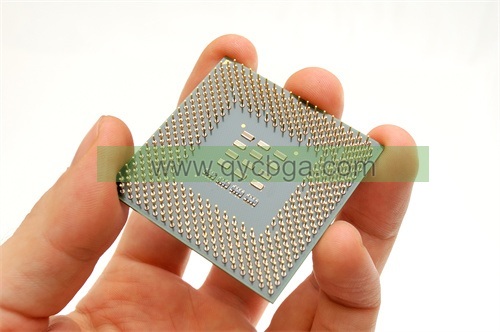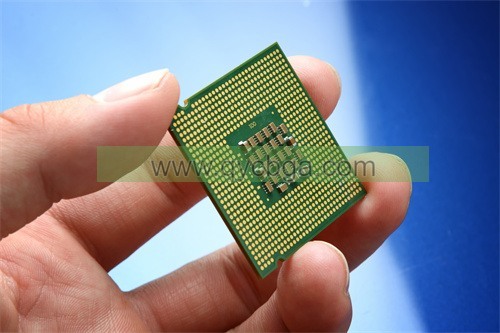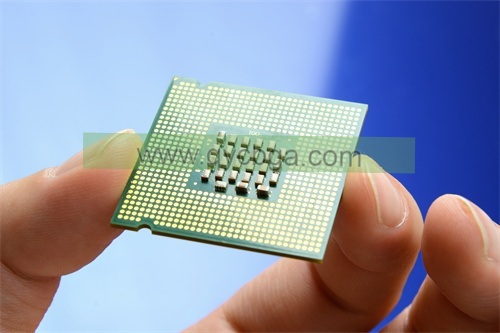LCCパッケージ基板とは?
LCCパッケージ基板メーカー,LCCの (リードレスチップキャリア) package substrate is a compact and versatile semiconductor packaging solution. This substrate features a flat surface with conductive pads for chip attachment, eliminating the need for traditional leads. LCC substrates offer efficient heat dissipation and reliable electrical connections, making them suitable for high-density applications. They are commonly used in telecommunications, 自動車, and consumer electronics where space-saving and performance are paramount. LCC package substrates are typically made from materials like ceramic or high-performance organic laminates, ensuring durability and stability in harsh operating environments. Their simplicity and reliability make LCC substrates a preferred choice for modern electronic assemblies.
The LCC (リードレスチップキャリア) package substrate is a type of electronic packaging used to mount and interconnect 集積回路 (ICの) onto printed circuit boards (プリント基板). LCC packages are designed to be compact and provide a high level of electrical performance while being compatible with surface mount technology (SMTの) 組立工程.
The substrate in an LCC package serves as a platform for the integrated circuit and provides electrical connections between the IC and the PCB. It typically consists of a thin layer of insulating material, such as fiberglass-reinforced epoxy resin (FR-4), with conductive traces and pads etched onto its surface. These traces and pads allow for the transfer of electrical signals between the IC and the rest of the circuit.
One of the distinguishing features of the LCC package is its lack of leads (hence the term “leadless”). Instead of traditional leads, LCC packages utilize metal pads on the bottom surface of the package that make direct contact with corresponding pads on the PCB. This design helps to reduce the overall size of the package and can improve electrical performance by minimizing parasitic effects associated with leaded packages.
全, LCC package substrates are commonly used in a variety of electronic applications where space savings, ハイパフォーマンス, and compatibility with SMT assembly processes are important considerations.
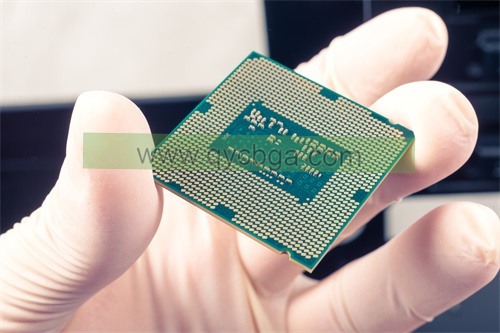
LCCパッケージ基板メーカー
LCC Package Substrate design Reference Guide.
A comprehensive reference guide specifically dedicated to the design of LCC package substrates might be a bit niche, but you can find valuable information in various sources such as technical documentation, application notes from semiconductor manufacturers, and industry publications. Here’s a general outline of what you might find in such a guide:
- Introduction to LCC Packages: This section would provide an overview of LCC packages, their advantages, アプリケーション, and key features.
- 基板材料選定: Discuss different substrate materials suitable for LCC packages, including FR-4, high-temperature laminates, and other advanced materials. Explain the considerations for material selection such as thermal properties, 電気的特性, and cost.
- Substrate Design Guidelines: 基板レイアウトの設計に関するガイドラインを提供します, including pad placement, トレースルーティング, ビア配置, とレイヤースタックアップ. This section would address considerations such as signal integrity, 配電, と熱管理.
- Electrical Performance Considerations: Discuss techniques for optimizing electrical performance, including impedance control, signal integrity analysis, and minimizing parasitic effects.
- サーマルマネジメント: Cover strategies for managing heat within the package, including thermal vias, ヒートシンク, とサーマルパッド. Explain thermal modeling techniques and considerations for high-power applications.
- 製造および組み立てのガイドライン: Provide recommendations for designing substrates that are manufacturable and compatible with standard assembly processes such as surface mount technology (SMTの) とリフローはんだ付け.
- Reliability and Testing: Discuss reliability considerations such as solder joint reliability, 機械的ストレス, および環境試験. Provide guidelines for reliability testing and qualification.
- ケーススタディと事例: Include real-world examples of LCC package substrate designs, ベストプラクティスの強調表示, 遭遇した課題, and solutions implemented.
- References and Resources: Provide a list of references, スタンダーズ, and additional resources for further reading and research.
While there may not be a single comprehensive guide dedicated solely to LCC package substrate design, you can find valuable information by consulting multiple sources and leveraging the expertise of semiconductor manufacturers, industry organizations, and technical publications.
What are the materials used in LCC Package Substrate?
The materials used in LCC (リードレスチップキャリア) package substrates typically include:
- 基板材料: The main body of the substrate is typically made from an insulating material, most commonly fiberglass-reinforced epoxy resin, commonly known as FR-4. FR-4 offers good electrical insulation properties and mechanical strength, making it suitable for a wide range of electronic applications.
- Conductive Traces and Pads: The conductive traces and pads on the substrate are usually made from copper. Copper is chosen for its excellent electrical conductivity, allowing for efficient signal transmission within the package.
- ソルダーマスク: A solder mask layer is applied over the substrate to protect the copper traces from oxidation and to prevent solder bridges during assembly. Solder mask material is typically composed of epoxy resin with pigments added to provide the desired color.
- 表面仕上げ: The surface finish is applied to the exposed copper pads to facilitate soldering during assembly. Common surface finishes for LCC package substrates include electroless nickel immersion gold (エニグ), immersion tin, and immersion silver.
- Dielectric Material: 場合によっては, additional dielectric layers may be added to the substrate to provide insulation between different signal layers or to improve signal integrity. These dielectric materials can vary and may include materials such as polyimide or liquid crystal polymer (LCPの).
- Optional Materials for Advanced Applications: For high-performance or specialized applications, alternative substrate materials may be used. These could include high-temperature laminates, セラミック基板, or flexible substrates depending on the specific requirements of the application.
全, the choice of materials for LCC package substrates depends on factors such as electrical performance, サーマルマネジメント, 費用, と製造可能性, with designers selecting materials that best meet the needs of their particular application.
How is LCC Package Substrate manufactured?
The manufacturing process for LCC (リードレスチップキャリア) パッケージ基板にはいくつかのステップがあります, 基板製造を含む, メタライゼーション, assembly of components, とテスト. ここでは、製造プロセスの一般的な概要を示します:
- 基板製造:
– 基質調製: このプロセスは、基板材料の準備から始まります, typically fiberglass-reinforced epoxy resin (FR-4). Sheets of FR-4 are cut to the desired size.
– レイヤースタッキング: Multiple layers of substrate material may be stacked together to create a multilayer substrate. Each layer may have conductive traces and pads etched onto its surface.
– Drilling: Holes are drilled through the substrate where vias are needed to connect different layers.
- メタライゼーション:
– Copper Deposition: A thin layer of copper is deposited onto the substrate surface using processes such as electroplating or sputtering. This copper layer forms the conductive traces and pads on the substrate.
– エッチング: A photoresist mask is applied to the copper layer, and then the unwanted copper is etched away using chemical processes, leaving behind the desired conductive patterns.
- ソルダーマスクアプリケーション:
– A layer of solder mask material is applied over the substrate, covering the copper traces and pads while leaving openings for soldering.
- 表面仕上げ:
– The exposed copper pads are coated with a surface finish to facilitate soldering during component assembly. 一般的な表面仕上げには、無電解ニッケル浸漬金が含まれます (エニグ), immersion tin, and immersion silver.
- コンポーネントアセンブリ:
– Placement of Components: 表面実装部品, including integrated circuits (ICの), resistors, コンデンサー, およびその他の電子部品, ピックアンドプレースマシンを使用して基板上に配置します.
– ハンダ付け: The components are soldered onto the substrate using reflow soldering or wave soldering processes. In reflow soldering, solder paste is applied to the pads, and then the entire assembly is heated to melt the solder, forming electrical connections between the components and the substrate.
- テストと検査:
– The assembled substrates undergo testing and inspection to ensure that all components are properly connected and that there are no defects or soldering issues.
– Various testing methods may be employed, including electrical testing to verify connectivity and functionality, 目視検査, and automated optical inspection (AOI) to check for defects.
- Final Packaging:
– Once testing is complete and any necessary repairs or rework have been performed, the substrates may be packaged and shipped to customers or further integrated into larger electronic assemblies.
製造プロセス全体を通じて, quality control measures are implemented to ensure that the substrates meet the required specifications and standards for performance and reliability.
The Application area of LCC Package Substrate
LCCの (リードレスチップキャリア) package substrates find application across a wide range of industries and electronic devices where compact size, ハイパフォーマンス, そして信頼性は不可欠です. 一般的なアプリケーション分野には、次のようなものがあります:
- 家電: LCC package substrates are commonly used in various consumer electronic devices such as smartphones, 錠剤, ラップトップ, デジタルカメラ, およびポータブルメディアプレーヤー. These substrates enable the integration of high-performance ICs in compact form factors, contributing to the sleek design and functionality of consumer gadgets.
- 電気通信: In the telecommunications industry, LCC package substrates are utilized in networking equipment, ルーター, スイッチ, 基地局, and other communication devices. They facilitate the implementation of high-speed data processing, 信号ルーティング, and wireless connectivity features essential for telecommunications infrastructure.
- カーエレクトロニクス: LCC package substrates are employed in automotive electronic systems for applications such as engine control units (ECU(エキュエート), インフォテインメントシステム, 先進運転支援システム (ADASの), および車載ネットワーキング. These substrates provide reliable performance in harsh automotive environments, 温度変化に耐える, 振動, と湿気.
- 産業用電子機器: LCC package substrates are used in various industrial applications, including automation systems, control panels, モータードライブ, power supplies, and instrumentation equipment. They enable the integration of sophisticated control and monitoring functions in industrial environments while meeting stringent reliability and performance requirements.
- 医療機器: LCC package substrates are found in medical devices such as diagnostic equipment, 患者モニタリングシステム, イメージングデバイス, および埋め込み型医療機器. These substrates support the implementation of advanced signal processing, data acquisition, and wireless communication features critical for medical applications.
- 航空宇宙・防衛: LCC package substrates are employed in aerospace and defense applications, including avionics systems, 衛星通信システム, レーダーシステム, およびミサイル誘導システム. 高い信頼性を提供します, パフォーマンス, and ruggedness required for mission-critical applications in challenging environments.
- インダストリアル・オートメーション: In industrial automation and robotics, LCC package substrates are used in controllers, motion control systems, robotic arms, およびセンサーインターフェース. これにより、正確な制御が可能になります, real-time communication, and integration with various sensors and actuators in industrial automation applications.
- 再生可能エネルギー: LCC package substrates are utilized in power electronics for renewable energy systems such as solar inverters, wind turbine controllers, およびエネルギー貯蔵システム. They support efficient power conversion, モニタリング, and control functions essential for renewable energy generation and integration into the electrical grid.
全, 汎用性, compactness, and reliability of LCC package substrates make them suitable for a wide range of applications across industries where advanced electronic functionality is required.
What are the advantages of LCC Package Substrate?
LCCの (リードレスチップキャリア) package substrates offer several advantages, making them a popular choice for various electronic applications:
- コンパクトサイズ: LCC packages are designed to be compact, with a small footprint compared to traditional leaded packages. This compact size enables the integration of high-density electronic components into space-constrained applications, contributing to the miniaturization of electronic devices.
- 高い電気的性能: LCC package substrates provide excellent electrical performance, with low parasitic effects and high-speed signal transmission capabilities. This makes them suitable for high-frequency applications requiring precise signal integrity and low noise levels.
- サーマルマネジメント: LCC packages typically feature efficient thermal management capabilities, allowing for effective dissipation of heat generated by integrated circuits. This helps prevent overheating and ensures the reliable operation of electronic devices, particularly in high-power applications.
- Compatibility with Surface Mount Technology (SMTの): LCC packages are compatible with surface mount technology (SMTの) 組立工程, making them easy to integrate into modern manufacturing workflows. This compatibility streamlines the assembly process, reduces manufacturing costs, and enables high-volume production.
- 信頼性の向上: LCC package substrates offer improved reliability compared to traditional leaded packages due to their robust design and construction. They are less susceptible to mechanical stress and thermal cycling, reducing the risk of solder joint failures and ensuring long-term performance in demanding environments.
- Enhanced Signal Integrity: The absence of leads in LCC packages reduces parasitic effects such as inductance and capacitance, resulting in improved signal integrity and reduced signal distortion. This is especially beneficial for high-speed digital and analog applications where signal quality is critical.
- 費用対効果: LCC packages are often cost-effective compared to other advanced packaging technologies such as ball grid array (BGAの) or flip-chip packages. Their simpler design and manufacturing process help lower production costs while still delivering high performance and reliability.
- Versatility: LCC package substrates are versatile and suitable for a wide range of electronic applications across industries, 家電製品を含む, 電気通信, 自動車, 産業オートメーション, 航宇, and defense.
全, the advantages of LCC package substrates, including compact size, 高い電気的性能, 熱管理機能, compatibility with SMT assembly, 確実, そして費用対効果, make them a preferred choice for many electronic designs.
How Much Does LCC Package Substrate Cost?
The cost of LCC (リードレスチップキャリア) パッケージ基板は、いくつかの要因によって異なります, 基板設計の複雑さを含む, 材料の選択, 製造プロセス, 生産量, サプライヤー/ベンダーの価格. コストに影響を与える可能性のあるいくつかの要因を次に示します:
- Substrate Design Complexity: 基板設計の複雑さ, レイヤー数を含む, the density of traces and pads, and any additional features such as impedance control or embedded components, コストに影響を与える可能性があります. More complex designs may require specialized manufacturing processes and materials, コストの上昇につながる.
- 使用材料: 基板の材料の選択, such as the type of substrate material (例えば。, FR-4, high-temperature laminates, セラミック), 表面仕上げ, ソルダーマスク, and dielectric materials, 全体的なコストに影響を与える可能性があります. Advanced materials with specific properties may be more expensive than standard materials.
- 製造プロセス: The manufacturing processes involved in producing LCC package substrates, 基板製造を含む, メタライゼーション, assembly of components, とテスト, contribute to the cost. Complex processes or additional quality control measures may increase production costs.
- 生産量: The volume of production can significantly impact the cost per unit. Higher volumes typically result in economies of scale, leading to lower per-unit costs. 逆に言えば, lower production volumes may incur higher costs due to setup fees and lower efficiency.
- サプライヤー/ベンダーの価格: The pricing policies of substrate manufacturers, suppliers, and vendors can vary based on factors such as market competition, geographic location, and business relationships. Shopping around and obtaining quotes from multiple suppliers can help identify cost-effective options.
全, the cost of LCC package substrates can range from a few cents to several dollars per unit, depending on the specific requirements of the application and the factors mentioned above. 設計者と製造業者は、これらの要素を慎重に検討し、コストの考慮事項と性能のバランスをとることが不可欠です, 品質, と信頼性の要件.
FAQs about LCC Package Substrate
What is an LCC package substrate?
An LCC package substrate is a type of electronic packaging used to mount and interconnect integrated circuits (ICの) onto printed circuit boards (プリント基板). It features a compact design with metal pads on the bottom surface, eliminating traditional leads.
What are the advantages of LCC package substrates?
LCC package substrates offer advantages such as compact size, 高い電気的性能, 効率的な熱管理, compatibility with surface mount technology (SMTの), 信頼性の向上, そして費用対効果.
What materials are used in LCC package substrates?
LCC package substrates typically consist of materials such as fiberglass-reinforced epoxy resin (FR-4) for the substrate, copper for conductive traces and pads, 保護用ソルダーマスク, and various surface finishes for soldering.
How are LCC package substrates manufactured?
The manufacturing process for LCC package substrates involves steps such as substrate fabrication, メタライゼーション, ソルダーマスクアプリケーション, 表面仕上げアプリケーション, コンポーネントアセンブリ, テスティング, and final packaging.
What applications are LCC package substrates used in?
LCC package substrates find application across industries such as consumer electronics, 電気通信, 自動車, 産業オートメーション, 航宇, defense, 医療機器, および再生可能エネルギーシステム.
How much do LCC package substrates cost?
The cost of LCC package substrates can vary depending on factors such as design complexity, 使用材料, 製造プロセス, 生産量, サプライヤー/ベンダーの価格.
What considerations should be taken into account when designing with LCC package substrates?
Design considerations for LCC package substrates include substrate layout, シグナルインテグリティ, サーマルマネジメント, 製造可能性, 確実, 組み立てプロセスとの互換性.
Where can I find more information about LCC package substrates?
Additional information about LCC package substrates can be found in technical documentation, application notes from semiconductor manufacturers, 業界出版物, and by consulting substrate manufacturers and suppliers.
 FCBGAパッケージ基板メーカー
FCBGAパッケージ基板メーカー


